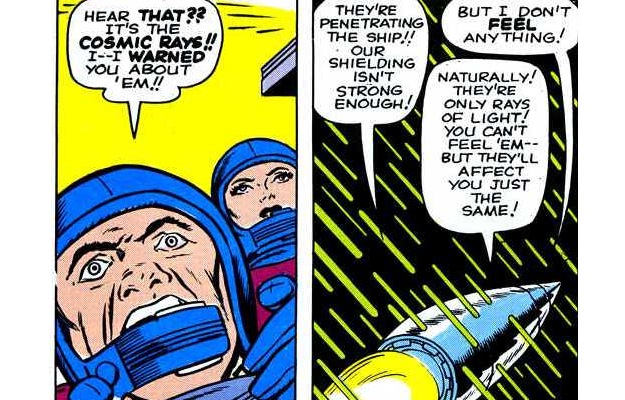 It’s not uncommon to hear space travel – especially the kind of privatized, non-government-funded space travel prescribed by the Inspiration Mars mission announced earlier this week – being described as “flying by the seat of your pants.” But what about “flying because of the seat of your pants” – or, rather, what happens after you pull your pants down?
It’s not uncommon to hear space travel – especially the kind of privatized, non-government-funded space travel prescribed by the Inspiration Mars mission announced earlier this week – being described as “flying by the seat of your pants.” But what about “flying because of the seat of your pants” – or, rather, what happens after you pull your pants down?
First off, take your minds out of the gutter – but not too far. We’re not talking about sex, but instead the everyday, all-too-common act of going to the toilet. New Scientist has a spectacular report that explains that the Inspiration Mars mission has found a novel use for the fecal matter excreted by the astronauts on the mission: Shielding against possible radiation poisoning.
According to Taber MacCallum – a member of the Inspiration Mars team assembled by multimillionaire and one-time space tourist Dennis Tito – human waste will join food and water as makeshift insulation on the spacecraft when it launches in 2018. “It’s a little queasy sounding, but there’s no place for that material to go, and it makes great radiation shielding,” he said, noting that food will be particularly useful in this regard. “Food is going to be stored all around the walls of the spacecraft, because food is good radiation shielding.” Apparently, there’s no danger of the food itself becoming dangerous because, as insulation, it runs no risk of turning radioactive over time. So, yeah, the more you know.
Still, the concept of lining walls with human waste and food does strike as a bit unsanitary. Not to worry, says MacCallum. The key, it seems, is to ensure that the feces are dried out before storage.
“Dehydrate them as much as possible, because we need to get the water back,” he said. “Those solid waste products get put into a bag, put right back against the wall.” If you’re wondering why we need to get the water back, then that sinking feeling that you’ve already got and are trying to ignore is spot on: The fluids from the human waste will be recycled into, gulp, drinking water for those lucky astronauts.
Think about this for a second: Even if the physical stress of space travel didn’t get you – or the long-term repetition and daily grind of the nearly-two-year-long mission didn’t threaten your sanity – you’d then have to deal with the fact that every time you went to the toilet, you’d have to dehydrate your own waste, recycle the liquids into drinking water, then stuff the rest into a plastic bag and hope the craftiness is enough to shield you from cosmic rays. Suddenly, the prospect of being an astronaut just became significantly less appealing.


